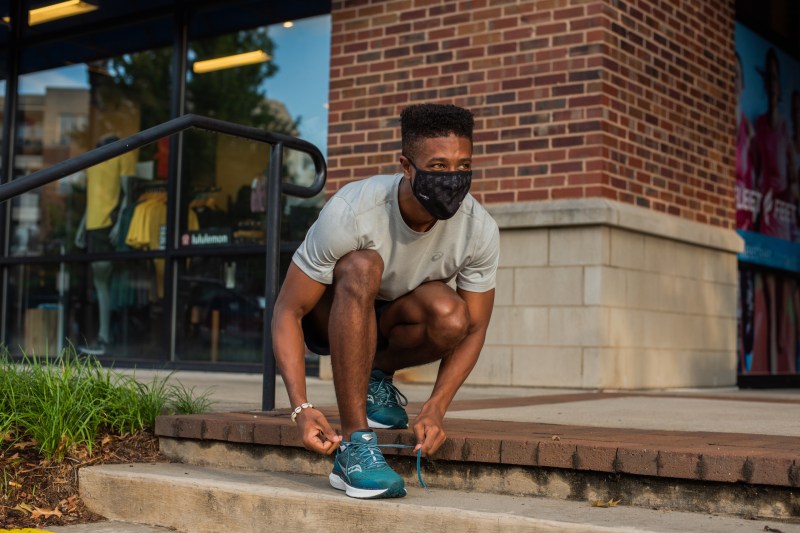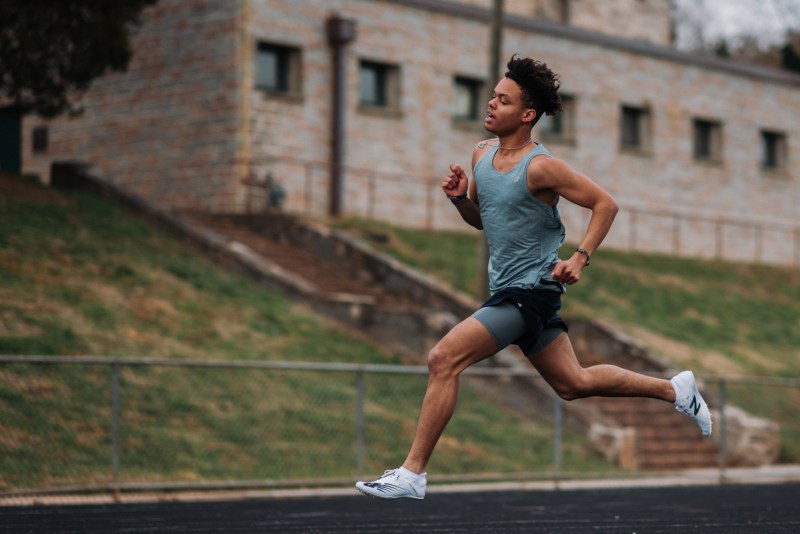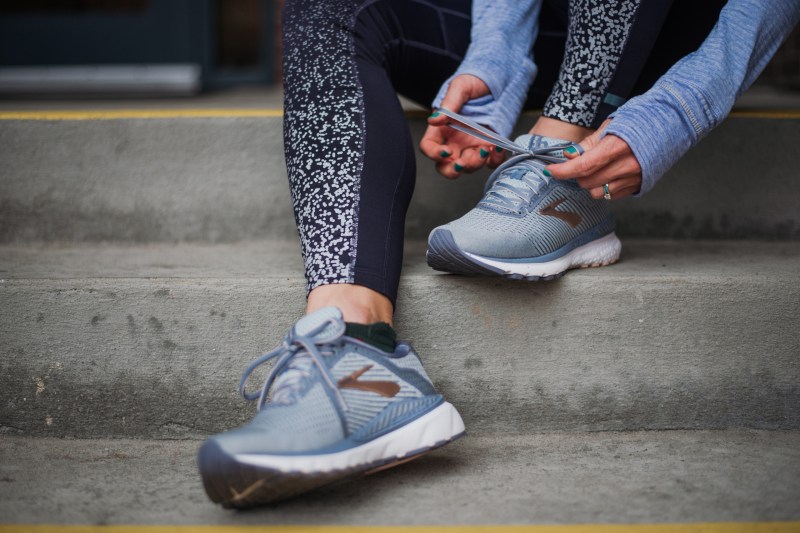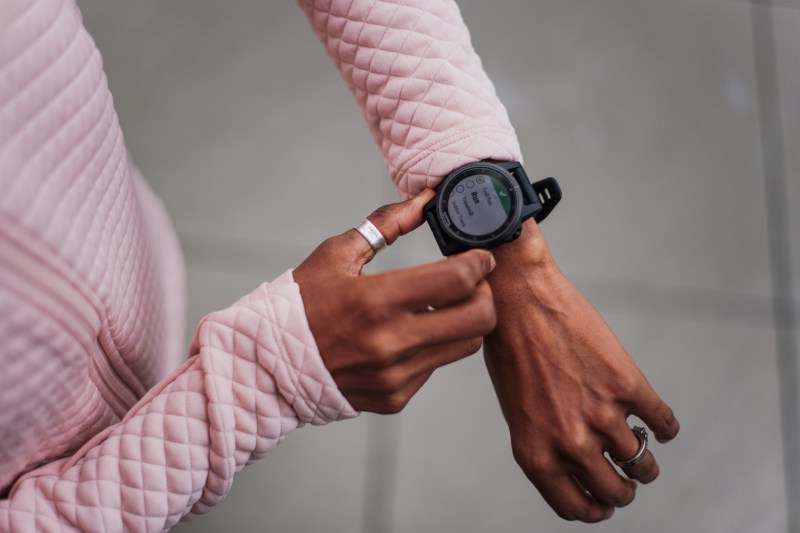
In order to run for a half marathon this fall, it takes careful preparation to not only complete but also enjoy those 13.1 miles. Sean Garbutt, director of training programs for three Fleet Feet running shops in and around Sacramento, California, knows all too well about running beginners. He has guided and trained hundreds of athletes for half marathons, and with his tips, you’ll know the roundabouts of running in no time.
Related Guides
Although you can find an abundant amount of half marathon training plans online or in running books, Garbutt’s experience has shown that the destination isn’t always it; it’s the experience. “You might not get that dream time your very first half marathon, but it’s a process,” Garbutt said. “Setting milestone goals along the way can be helpful in moving you toward that goal down the road.” Enjoy your training sessions and celebrate your accomplishments — small or big — with friends, family, and a couple of well-earned beers.
The Commitment to Training

So the real question is how long this sonofabitch is going to take to train for, how many boozy Saturday nights you’re going to have to give up, and how much Swedish Fish are going to go on swimming. According to Garbutt, beginners don’t have to be hammering out 5-milers; if you can handle 3 miles without stopping, a good training program can get you the rest of the way over 10 weeks. If you’re already active in another fairly aerobic sport, from pick-up basketball to cycling, soccer, or another “deeper base of
Regarding frequency, newer runners should aim for four to five days a week, mixing in easy runs; one progressively longer run, which will peak at 12 miles two weeks before your race; and some kind of faster workout, Garbutt said. More experienced runners can expand up to six days a week, but he cautions against seven days with no rest: “The costs are too great with cumulative fatigue,” he said. Cycle three weeks of increasing mileage with one week of lower mileage, which allows your body to rest and recover.
Running Speed Work

While many programs focus on longer runs, preparing your body for the demand of 13.1 miles, Garbutt and his team believe in speed workouts every week. “The goal is always to increase efficiency,” he said. Running faster expands the range of motion and improves overall running form, which transfers back to your slower miles, which become faster.
Some of Garbutt’s favorites include hill repeats at an eight or nine effort out of 10 or the classic four repeats of two minutes “hard” with a minute of recovery between each. Sandwich either of these between a 15-minute warm-up and a 15-minute cool-down.
Finally, train like you race, so while you can do the above workouts on a high school track or a soft forest trail, Garbutt’s groups always do them on the roads. Unless you plan to run 13.1 miles in circular quarter-mile increments, you’re better off on asphalt.
Running Gear

Sure, roll your eyes when the guy who works at a running store tells you to buy quality shoes. But the reality is that no single piece of gear is more critical to your health and completion of your race than a good pair of running shoes. A running store like Fleet Feet or one of the innumerable others around the country will carry the widest selection of shoes specifically designed for running, and they’ll have knowledgeable staff who can listen to your concerns, evaluate your needs, and pair you with several pairs of perfect trainers. All you’ll have to do is pick. Wear your high school basketball shorts, calf-length socks, and that cotton t-shirt you got for switching cable providers, but don’t scrimp on shoes.
Regarding all the other things you can wear, socks should be second. The singular line of defense between your toes and your shoe over a baker’s dozen miles, they’ll wick sweat and reduce the likelihood of blisters. They’re great, and if you don’t mind washing them out after each run, at least buy one pair.
Specialized running
But listen: Buy some good shoes no matter what.
Running Technology

There’s the temptation to pick up a new GPS watch when you get serious about a half marathon, and GPS watches and fitness trackers can be brilliant training tools. Nothing provides exact mileage, pace, heart rate, and a host of other metrics better over a run. But still, Garbutt cautions against it. “Living by GPS can be a dangerous game,” he said, explaining that new runners get too dependent on it rather than learning the feel of the right paces and leaning on self-forgiveness when it comes to off days, which happen to everyone.
What’s the best piece of tech you can bring with you on a run? It’s either an analog, non-smart digital watch or your trusty smartphone. Use either of their time functions, and learn to feel what easy, regular, half marathon, and hard paces feel like.
Nutrition for Runners

Many look to running not just as exercise but also as a weight-loss program. And it can be. But from the perspective of performance, Garbutt said that you should shift your focus: “[Nutrition] is about fueling for the workout you’re doing.” He divides what you eat into three categories: Before, during, and after the run.
Before the run, you want something light on the stomach, easily digestible, and filled with carbs, which will power your miles. Bananas and peanut butter are a favorite, though you can experiment with what works for you. (Trust us, if it’s not working, you’ll be behind the nearest bush knowing it firsthand.)
During the run, taking in carbs and liquids will prepare you for race day as well as provide sustained energy throughout. You’re looking for convenience here as well as digestibility, and many prefer specially-designed products like gels (a syrup-like substance), gummies, or sports
Finally, after the run, you’re looking to replenish and recover, so select things that have both protein and carbs. Ideally, you want a one-to-four ratio of the former to the latter, and you want to get this down within 30 minutes of your run. Plan on eating a good meal about 90 minutes after your run to seal the deal, and drink plenty of water.
Sleep and Recovery

There’s no question that training for your marathon is going to take it out of you. The best way you can recover from your runs and allow your body to adapt is by taking care of your muscles and getting adequate rest.
Foam rollers, lacrosse balls, ice baths, and other methods and gadgets are useful in treating and preventing minor running injuries. But for Garbutt’s clients, he’s found the most effective tool in the kit is a recovery massage gun. These handheld devices require zero space in which to operate, and they’re easy to use while you’re watching Netflix or talking with your parents on the phone. Most situations can be turned into recovery sessions.
On sleep, get your eight hours. Hell, get nine hours. A bad night’s rest can manifest itself in poor performance the next day. But the easiest way Garbutt has found to help his clients get more rest is with a nap. “It’s the easiest way to boost your recovery, especially if you’re feeling that cumulative fatigue, week after week,” he said. Even just a few days a week can work wonders.
Editors' Recommendations
- How to train for a 5K: What you need to know
- Why strength training should be an essential part of your gym routine
- A new study suggests the secret to your skincare routine is… strength training?
- How to train for your first century bike ride (tips to help you get you through all the miles)
- How to do pull-ups (and master them once and for all)




